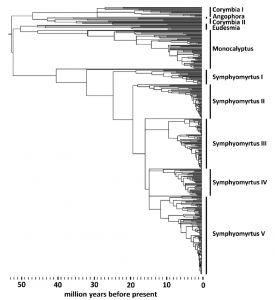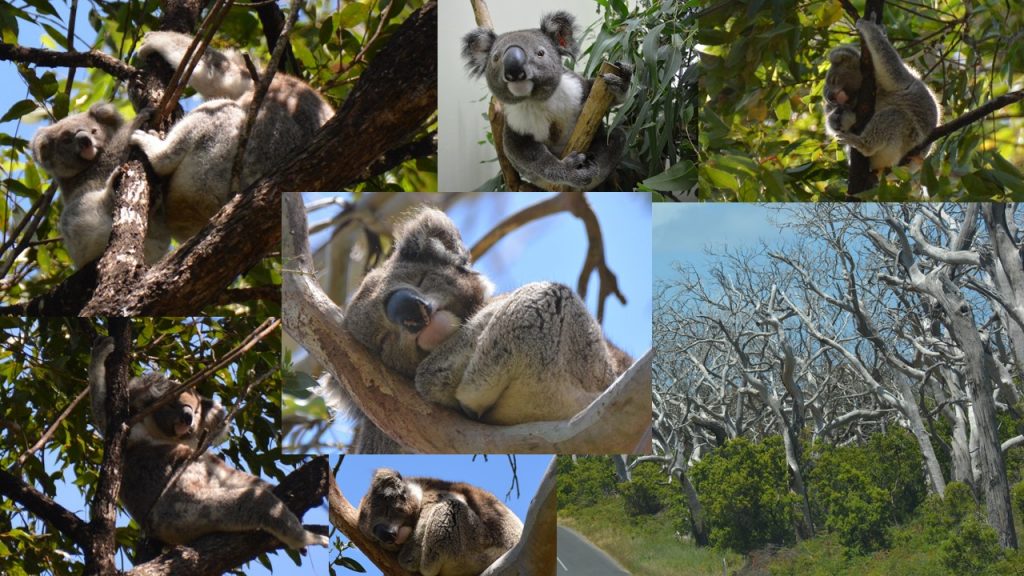Group-specific UPLC-MS/MS analyses of eight groups of polyphenols of 628 eucalypts from the genera Eucalyptus, Angophora and Corymbia revealed wide presence of high concentrations of polyphenols, particularly ellagitannins
Marsh et al. (2017) was the first paper resulting of our collaborative efforts with Bill Foley’s group to better understand the role of eucalypt polyphenol chemistry in eucalypt-koala interactions. It shows for the first time how surprisingly widely hydrolysable tannins and proanthocyanidins are distributed within the eucalypt phylogeny. The phylogeny as such divided the studied 628 eucalypt samples into ten phylogenetic clades and all clades contained both galloyl and HHDP derivatives of hydrolysable tannins and both procyanidins and prodelphinidins of proanthocyanidins. Tannin concentrations varied between 2 to 170 mg/g DW and hydrolysable tannins were the main tannins, comprising 64% of the total tannins. However, to pinpoint the high variability, hydrolysable tannin values ranged from 1% to 99% of total tannins between the species. In general, ellagitannins were the most dominant group of tannins in eucalypts.
Marsh et al. observed moderate phylogenetic signal in all polyphenol constituents, apart from the concentration of the prodelphinidin subunit of proanthocyanidins and the mean degree of polymerisation of proanthocyanidins. These two traits, which have previously been shown to be important in determining plants’ protein precipitation capacity, may have evolved under selection, perhaps in response to climate or herbivore pressure. Hence, the signature of evolutionary history appears to have been erased for these traits. This study is an important step in moving away from analysing “totals” to a better understanding of how phylogenetic effects influence phenolic composition, and how this in turn influences ecological processes.
The next papers in our Eucalyptus series will reveal how different polyphenol groups in eucalypt determine the variable bioactivities observed in these very same foliar tissues. It remains to be seen if the bioactivity patterns that we have earlier witnessed with other plant species are valid also within this special and diverse Australian species set. In addition, we have the possibility to link the bioactivity results and those of specific individual compounds onto the eucalypt-koala interactions. Such extensive efforts, followed by feeding and metabolic experiments may guide us towards better understanding of how to help this threatened mammalian species in its battle against human activities and viruses such as chlamydia.


